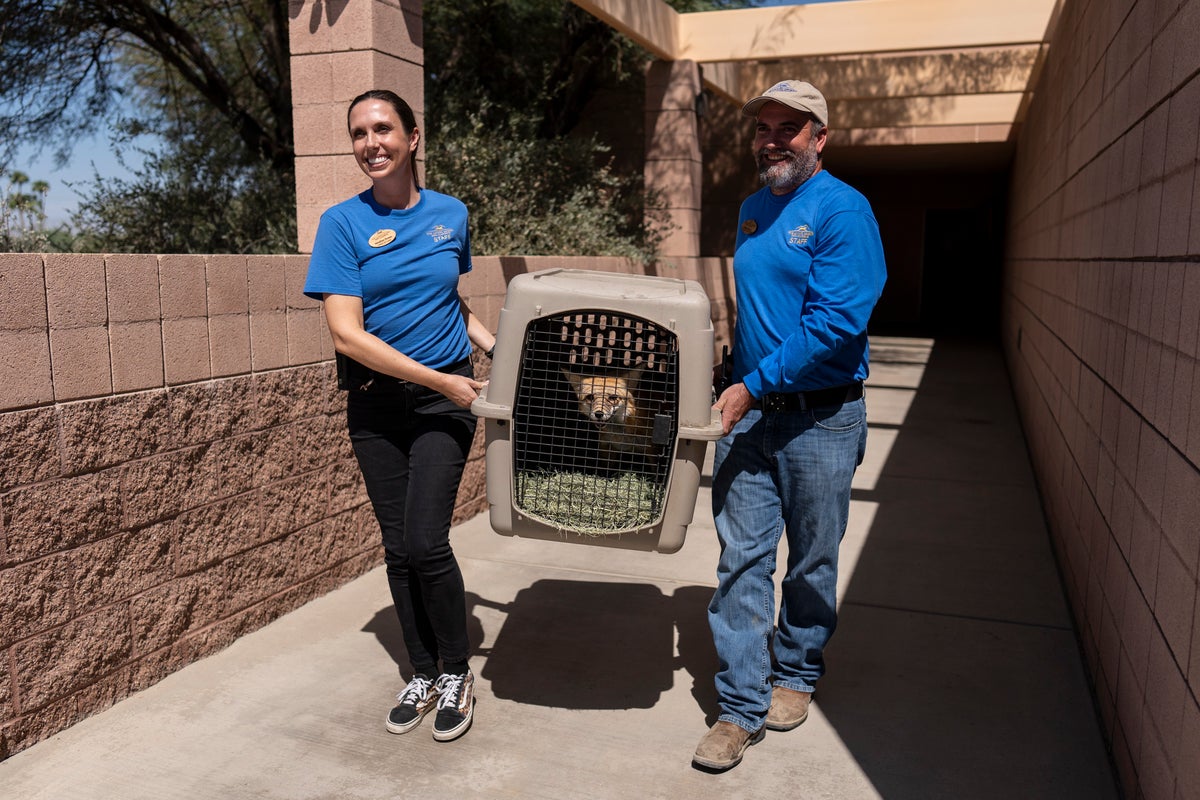
Your support helps us to tell the story
With a major wildfire burning near his mountain town east of Los Angeles, Cowboy the barn owl was unaware of the danger and instead having the adventure of a lifetime.
Perched in the front seat of a truck, Cowboy — along with nearly 50 other animals — was being evacuated Sept. 12 from the Big Bear Alpine Zoo in the face of the advancing Line Fire, which blazed through more than 60 square miles (155 square kilometers) of the San Bernardino National Forest.
“He just had the greatest time,” said Mike Barnes, Director of Animal Care and Health at the Living Desert Zoo and Garden in Palm Springs, where Cowboy was being taken. "They said he was probably going to be a handful on the ride down and he was the biggest sweetheart."
In less than 48 hours, two-thirds of the zoo’s animals had been safety evacuated. About a week later on Thursday, Cowboy and the other animals returned home.
“They just had this little kind of holiday, if you will, down here in the desert,” said Heather Downs, animal curator at the Living Desert.
It was the second time that Big Bear Alpine Zoo animals were transported to the Living Desert during a wildfire. Each time, lessons are learned.
The Line Fire spewed out billowing clouds of smoke, turning the skies orange and filling the air with hazardous particles. For birds and smaller mammals, who have higher respiratory rates and are especially sensitive to air quality, they needed to get out of there fast.
The residents of the Big Bear Alpine Zoo are not your usual zoo inhabitants. The sanctuary houses rehabilitated animals that are unable to be released into the wild, many of which are elderly and have injuries.
One of the eagles is blind in one eye after suffering from DDT poisoning, which means staff had to add perches and stumps lower to the ground in its enclosure and move logs that could be tripping hazards, Barnes said. The sanctuary houses many other birds who can't fly, as well as a three-legged kit fox who also needed special accommodations.
Left behind in Big Bear were the bears, bobcats, mountain lions, snow leopards and wolves, who were moved inside where they were protected by HVAC systems and air-scrubbers.
The animals that were transported couldn't go on a full stomach, but zoo staff made sure everyone was fed that night when they arrived at the Living Desert.
There was one arthritic sandhill crane that looked “a little down, a little dumpy,” but a veterinarian determined it was simply grumpy from the change in temperature, Barnes said.
During the evacuation, Big Bear zoo curator Jessica Whiton transported two foxes who left behind a memorable scent in the back of her car, but it was mostly a stress-free experience for them, she said.
“We had them positioned so they could see out the window, and they curled up and watched the drive down the mountain,” Whiton said.
The Living Desert regularly drills and prepares for scenarios where they have to take in or transport large numbers of animals. The nonprofit zoo partners with government agencies to hold confiscated wildlife and help rehabilitate animals, and had more than enough holding space to take in visitors.
Barnes' Thursday began at 6 a.m. as he loaded up an array of birds — cranes, hawks, barn owls and a pelican — and made the winding two-hour drive back to the animals' mountain home.
Back at the Living Desert, Piper the red fox was getting ready for her ride home.
The one-year-old orphaned kit stood on top of her crate and sniffed at it curiously in her enclosure. Staff train the animals to get used to their crates by repeatedly placing treats inside, which is helpful in emergency situations like these when they have to be transported for a long period of time, explained Big Bear animal keeper Alex Palmer.
“Today we're going to be crating her back up, hopefully voluntarily, getting her loaded up in one of our transport shuttles and getting her back up to the zoo,” Palmer said. “She'll be a lot happier, a lot more comfortable hopefully, and back with her neighboring foxes.”







